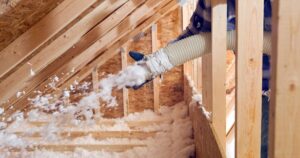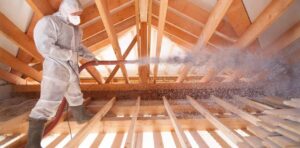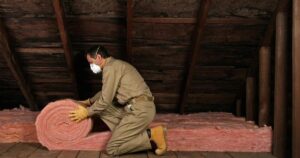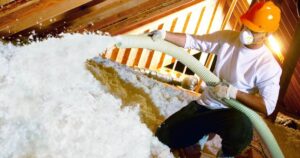Insulating tight spaces refers to adding insulation materials to confined or hard-to-reach areas within a building or structure. The primary goal of this process is to create a thermal barrier that prevents the transfer of heat or cold, thereby enhancing energy efficiency and maintaining a comfortable indoor environment.
In this comprehensive guide, we will explore the world of insulating tight spaces, a critical aspect of maintaining energy efficiency in your home. Proper insulation not only leads to significant cost savings but also contributes to your overall comfort.
We’ll cover the importance of insulating tight spaces, various types of areas that require insulation, the materials and tools you’ll need, steps to insulate these spaces effectively, the benefits of proper insulation, common mistakes to avoid, and the importance of maintenance and upkeep.
Importance of Insulating Tight Spaces
Insulating tight spaces is crucial for several reasons. Firstly, it helps in maintaining energy efficiency, which is essential for reducing heating and cooling costs. Secondly, it ensures your comfort by keeping your indoor environment consistent, regardless of outside weather.
Proper insulation contributes to the longevity of your home. By minimizing temperature fluctuations and moisture buildup, it helps protect the structural integrity of your property.
Energy Efficiency and Cost Savings
Energy efficiency is at the core of attic insulating tight spaces. By preventing heat from escaping during the winter and keeping your home cool in the summer, you can significantly reduce your energy consumption.
This, in turn, translates to substantial cost savings on your utility bills. The money you save can be invested back into your home or used for other important expenses.
Types of Tight Spaces
Various areas in your home require insulation to maintain energy efficiency. These spaces include attics, crawlspaces, wall cavities, and even windows and doors. Each of these areas presents unique challenges and opportunities for insulation, and understanding them is essential to making informed decisions about your home’s energy performance.
Attics
Attics are often a primary source of heat loss in homes. Insulating them effectively is crucial to maintaining a consistent indoor temperature and reducing heating costs. We’ll delve into the methods and materials best suited for attic insulation.
Crawlspaces
Crawlspaces are another space that can be notorious for moisture problems and energy loss. We’ll discuss the importance of insulating crawlspaces and ways to do it correctly.
Wall Cavities
Wall cavities are hidden spaces within your walls that can significantly impact your home’s energy efficiency. Proper insulation of these areas is essential to reduce heat transfer and maintain comfort.
Windows and Doors
Windows and doors are often overlooked when it comes to insulation. However, they are crucial areas that can benefit from weatherproofing to prevent drafts and maintain energy efficiency.
Materials and Tools
To effectively insulate tight spaces, you’ll need the right materials and tools. We’ll explore the different insulation materials available, the safety equipment required for the job, and the various tools for installation to ensure a successful project.
Insulation Materials
Understanding the properties of different insulation materials, such as fiberglass, foam board, spray foam, and cellulose, is crucial in choosing the right one for your specific needs.
Safety Equipment
Safety is paramount when working with insulation materials. We’ll discuss the necessary safety equipment to protect yourself during the installation process.
Tools for Installation
Equipping yourself with the right tools is key to a successful insulation project. We’ll cover the tools needed for various installation techniques.
Steps to Insulate Tight Spaces
Insulating tight spaces involves a series of steps to ensure maximum effectiveness. We’ll walk you through assessing the space, choosing the right insulation, preparing the area, and the different installation techniques required.
Assessing the Space
Assessing the space involves identifying problem areas, such as gaps and voids, and measuring the insulation requirements for a precise fit.
Choosing the Right Insulation
Choosing the right insulation material, whether it’s fiberglass, foam board, spray foam, or cellulose, is a critical decision that depends on your specific needs and the space you’re insulating.
Preparing the Area
Before installing insulation, preparing the area is essential. This includes cleaning the space, sealing gaps, and taking necessary safety precautions to ensure a successful and safe installation.
Installation Techniques
We’ll discuss various installation techniques, including batt insulation, blown-in insulation, foam board installation, and spray foam application, to help you choose the best method for your project.
Sealing Gaps and Air Leaks
One of the key aspects of insulation is ensuring that gaps and air leaks are properly sealed, as this helps maintain energy efficiency and prevent drafts.
Benefits of Proper Insulation
Proper insulation comes with several benefits, including enhanced energy efficiency, increased comfort, and reduced heating and cooling costs. We’ll explore each of these advantages in detail.
Energy Efficiency
A well-insulated home retains heat in the winter and remains cool in the summer, resulting in overall energy efficiency and reduced utility bills.
Comfort
Insulation contributes to consistent indoor temperatures and a comfortable living environment, irrespective of external weather conditions.
Reduced Heating and Cooling Costs
By preventing heat loss and maintaining a comfortable indoor temperature, proper insulation leads to substantial savings on heating and cooling costs.
Common Mistakes to Avoid
While insulating tight spaces is essential, it’s equally important to be aware of common mistakes to avoid. Over-compression of insulation, leaving gaps or voids, and ignoring ventilation needs are key pitfalls to watch out for.
Over-Compression of Insulation
Over-compressing insulation can reduce its effectiveness. We’ll explain how to avoid this mistake while achieving a snug fit.
Leaving Gaps or Voids
Leaving gaps or voids during installation can compromise the insulation’s performance. We’ll discuss how to prevent these issues and ensure a complete seal.
Ignoring Ventilation Needs
Ignoring ventilation needs can lead to moisture problems and indoor air quality issues. We’ll highlight the importance of proper ventilation in your insulation project.
Maintenance and Upkeep
Maintaining the insulation’s integrity is essential for long-term effectiveness. Regular inspections and the replacement of damaged insulation are vital aspects of ensuring your home remains energy-efficient.
Regular Inspections
We’ll outline the importance of regular inspections to identify any issues with your insulation and address them promptly.
Replacing Damaged Insulation
Over time, insulation may wear or become damaged. We’ll discuss the signs of damaged insulation and how to replace it to maintain your home’s energy efficiency.
Conclusion
Insulating tight spaces is a fundamental aspect of optimizing energy efficiency and maintaining a comfortable living environment in your home, by understanding the importance of insulation, choosing the right materials, and following proper installation steps.
Avoiding common mistakes, you can enjoy the benefits of lower energy costs, increased comfort, and a well-maintained property. Regular maintenance and upkeep ensure that these benefits last for years to come.










